Meditation
Rajyoga Meditation
The word yoga means connection. In Rajyoga meditation, the soul can experience a connection, or mental link, with the Supreme Soul. The process of establishing this link begins with a journey into one’s inner world to discover one’s true, spiritual identity.
The process of going within, experiencing oneself as a spiritual being or soul, which is a luminous, sentient point of energy, and then connecting with the Supreme Source of energy empowers the self in a lasting way.
This process of self-empowerment is entirely voluntary and involves no element of suppression or coercion of the mind. It is all about aligning one’s thoughts, feelings, words and actions with the soul’s innate qualities of peace, love, bliss and truth.
Benefits of Meditation

Meditation energizes your awareness, bringing both peace and wisdom to a busy mind. It expands one’s capacity to love, and heals broken hearts. It also dissolves many fears, replacing them with lightness and freedom from anxiety. But perhaps the greatest gift that meditation brings is the glow of inner peace that is both gentle and strong. Practice of Rajyoga meditation or intellectual communion with God brings into the soul many powers. Of these, eight are important.
Power to Pack UpWith the ability to go within, one can learn how to pack up all wasteful thinking in a second, so that there is lightness and freedom from burdens and worries, though there may be many responsibilities. One’s mind is scattered over the wide world and so much drawn out to people and matters that one is unable to sleep or to detach oneself at will. With the practice of meditation, one can wind up one’s thoughts at will.
Power to TolerateJust as trees offer fruit to all, regardless of whether they gently pluck it or throw stones at them, a yogi tolerates any kind of behaviour and responds to even hostility with grace. In a light frame of mind, one can tolerate any kind of situation or people without even feeling that one is tolerating something. Impatience, irritation and annoyance disappear like mist in bright sunshine when one has the understanding that each soul is simply playing its role in the vast drama of this world.
Power to AccommodateJust as the ocean accepts all rivers, polluted or clean, that flow into it, a yogi can accommodate all sorts of people and adjust to any situation. This power makes one broadminded and patient.
Power of JudgmentThis is the ability to take quick and correct decisions. One gets the ability to accurately assess a situation. In a detached, impartial state of mind, one can also judge one’s own thoughts, words and actions, and ensure that one’s judgment is not influenced by any bias.
Power of DiscriminationJust as an expert jeweller can distinguish between false and real gems, an experienced practitioner of meditation develops the ability to distinguish between right and wrong, good and bad. A yogi can tell truth from apparent truth and see the difference between things of temporary value and those of lasting value, and between the superficial and the subtle. This power saves one from being deceived by illusions.
Power to FaceMeditation develops one’s ability to face loss, adversity and hardship with equanimity. The awareness and confidence a yogi develops in his or her spiritual worth gives him the courage to face any situation.
Power to CooperateAs a result of having the above powers, one is able to share with others one’s qualities and help them in their tasks. There is no feeling of competition, so one is easily able to give as well as accept suggestions in the best interest of the task at hand. This power helps people come together to accomplish big things.
Power to WithdrawWith the awareness that I, the soul, am an entity different from the body, one can withdraw from the senses and free oneself from the influence of an unpleasant situation. Just as a tortoise retreats into its shell to rest or escape a threat, a yogi can retract himself from any situation and stay protected.
Getting Started
Make an appointment with yourself for 10 or 20 minutes each morning or evening.
Find a quiet place and relax. Soft music, though not a necessity, can create an appropriate atmosphere. Sit comfortably upright on the floor or in a chair.
Keep your eyes open and, without staring, rest them on a chosen point in front of you.
Gently withdraw your attention from all sights and sounds. Become the observer of your thoughts.
Don’t try to stop thinking, just be the observer, not judging or being carried away by your thoughts.
Gradually, the thoughts will slow down and you will begin to feel more peaceful. Create one thought about yourself, for example, “I am a peaceful soul.” Hold that thought on the screen of your mind; visualize yourself as being peaceful, quiet and still.
Stay as long as you can in the awareness of this thought. Do not try to fight off or suppress other thoughts or memories that may come to distract you. Just watch them pass by and return to your thought, “I am a peaceful soul.”
Now, think of the Supreme Soul, who is the ocean of peace.
Acknowledge and appreciate the positive feelings and other positive thoughts which may spring directly from this thought.
Be stable in these feelings for a few minutes. Be aware of unrelated thoughts.
Finish your meditation by closing your eyes for a few moments and creating complete silence in your mind.
Understanding God
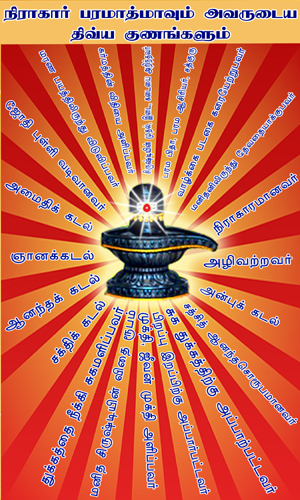
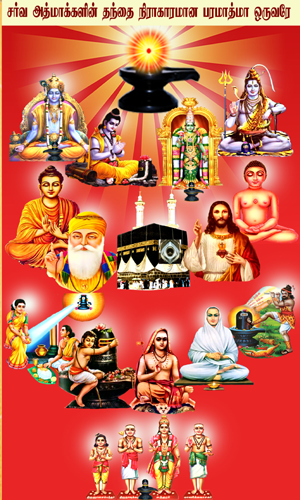
There are many beliefs about God. As a result, everyone understands God in his or her own way. Some people think there is no such entity as God, their main argument being that there is no proof of His existence. Because God cannot be seen with the physical eyes doesn’t mean He doesn’t exist. Like wind, which cannot be seen but can be felt, God’s presence can be experienced through spiritual knowledge and meditation.
Who is God and What is His Form and Name?God is called the Supreme Soul, which means He is supreme among all souls. Like souls, God is a subtle point of light invisible to the naked eye, but unlike humans He is beyond the cycle of birth and death and the effect of actions in the form of experience of pleasure or pain. God is the Supreme Father, Mother, Teacher and Preceptor of all human souls.
Being incorporeal, God is represented by an oval-shaped stone or light in many religious traditions. Hindus worship an oval-shaped stone called Shivlingam or Jyotirlingam, meaning a symbol of Shiva or symbol of light. Muslims revere an oval-shaped black stone called Sang-e-Aswad (holy stone), which is placed in the Kaaba in the Grand Mosque in Mecca.
The founder of Christianity, Jesus Christ, said God is light. The sanctuary lamp that burns before the altar in many Christian and Jewish places of worship symbolizes God’s eternal presence. Guru Nanak, the founder of Sikhism, also sang the praise of the One who is ‘all light’ and incorporeal, while Zoroastrians worship God in the form of fire.
God is a giver, serving all beings altruistically and without discrimination, because of which He is remembered in some countries and cultures by the name Shiva, The Benevolent One.
His VirtuesGod is the Supreme Father of all souls. He is called the Creator. His many names make His virtues apparent – He is the Ocean of Peace, Ocean of Knowledge, the Blissful One, and the Truth. He liberates humans from bondage to vices, and bestows salvation on them. He dispels our sorrows, showers us with mercy and, while doing all this, is absolutely detached. Many are the religions and paths that souls take to reach God. But He does not exclusively belong to anyone. He belongs to everyone equally.
The Abode of GodWhere does God live? Is there somewhere one can go to see Him and be with Him? God is a subtle point of light, and He does not pervade the physical universe. Nor does he live in the heart of any human being or in matter. His home is the incorporeal world, an infinite expanse of golden-red light beyond the sun, moon and stars. It is the original abode of all souls as well. By practice, we can travel to that abode by thought and experience its purity and stillness and the silent, luminous presence of our Father, which makes the soul feel truly at home.
The Divine Descent of GodGod descends into this world when it is enveloped in the darkness of ignorance and unrighteousness. This is a period when humans are groping around for want of clear understanding of their true identity and the purpose of life, and are acting under the influence of vices. The Sun of Knowledge appears at the darkest hour in human history, to dispel the darkness and herald the dawn of a new age of truth, peace and happiness. He reveals to humans eternal truths about the self, God and the vast drama taking place on this stage we call Earth. Empowered by this knowledge, and their connection with Him, souls free themselves from the influence of vices such as lust, anger, greed and ego and work to achieve their highest potential. Such effort by a critical mass of humanity eventually brings about positive change in the whole human family, and the night comes to an end and a new day dawns.
Know thy self Understanding the Self
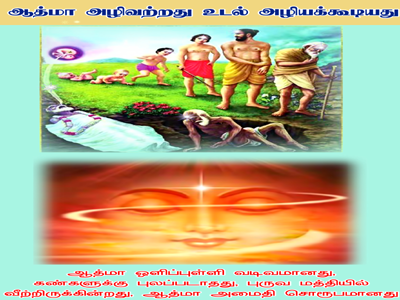
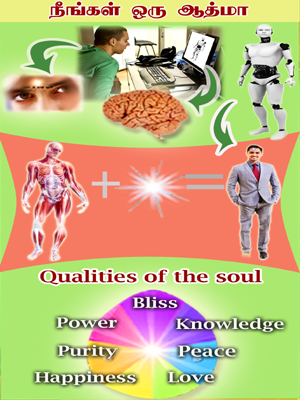
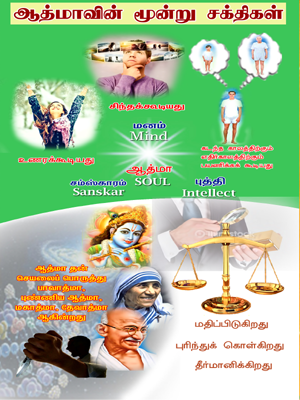
Realising the Self
At some point during the journey of life, any of the following questions might have crossed your mind:
- Who am I? What am I? What is my true identity?
- How do thoughts come and go? How can I control them?
- How do my thoughts and feelings interact with the body?
- How do I make my mind powerful?
- Why do we experience emotions, feelings, tension and stress?
- How does one develop behavioural patterns, traits etc., and how to change them?
- How do I lead a life of peace and bliss?
The first lesson is about understanding the self.
Soul and BodyThe human body is a complex pattern of physical energies. Atomic particles bind together to form the organic structures and inorganic minerals which interact chemically to carry out the hormonal and nervous processes that run the body. What we see as old or young, ugly or beautiful, male or female are differing levels of physical energies. However marvellous a machine the body may be, it is the presence of the non-physical sentient energy, the soul, which makes it function.
What am I?I am a living entity separate from the body. Just as a man speaking on a telephone has an identity separate from that of the instrument – he being a living person who has the faculties of feeling, thinking, willing and making effort — the conscious entity in the body which uses the word “I” is different from the body, which has eyes, ears, limbs etc. as its components. I am not the eyes, ears or the mouth, but I see with my eyes, speak through my mouth, hear with my ears and am their master. I am a soul, eternal and immortal. The body is mortal; I act through it and experience the results of my actions. The soul is the driver of the body, which serves as its vehicle. When the soul leaves the body, the body is declared dead.
Faculties of the SoulThe soul is a living or a sentient being. It is said to be sentient or living because it can think and reflect; it can experience pleasure and pain as also bliss and peace; it can bestir itself and make efforts and actions, whether good or bad. The soul has three faculties – mind, intellect and predispositions.
The mind is the thinking faculty of the soul. It is the mind that imagines, thinks and forms ideas. The thought process is the basis of all emotions, desires and sensations. It is through this faculty that thoughts can be projected to a distant place, past experiences and emotions can be relived and the future can be anticipated. It is the mind that experiences variations of mood. The mind is a faculty of the metaphysical soul, not to be confused with the brain.
The intellect is used to assess thoughts. It is the faculty of understanding and decision-making and stands out as the most crucial faculty of the three. With the broadening of the intellect, clear understanding and realization of knowledge becomes natural, and the power to decide and reason increases. It is the intellect that discriminates, judges and exercises its power in the form of will.
Predispositions (called sanskars in Hindi) are the impressions or sub-consciousness which is a record of the soul’s past experiences and actions. Sanskars can take the form of habits, talents, emotional state, personality traits, beliefs, values or instincts. Every action either creates a sanskar (this is how a habit begins) or reinforces an old one. Whichever impression is etched on the soul remains there, forming a record of the experiences the soul has had. When we speak of someone’s defects, specialties or virtues, we are referring to sanskars, which are the basis of a person’s individuality.
Seat of the SoulThe soul is located in the part of the brain called the hypothalamus. Sitting on this seat it controls the nervous system and, through it, various organs in the body. Just as a driver controls a car through its control mechanisms while sitting in the driver’s seat, the soul uses the brain to control the body. The brain is the machine by means of which the soul thinks, remembers and receives and sends messages to physical organs through the nerves. Apart from physical sensations, the soul experiences pleasure, pain, happiness and sorrow through the brain.
Nature of the SoulA soul is a tiny, metaphysical, sentient point of spiritual light. The number of souls is finite and all souls are unique and eternal: they were never created and will never be destroyed. As such, souls are invisible to the naked eye but one can experience their presence. The soul has no gender. The intrinsic nature of the soul is that of love, peace, happiness, truth, bliss and purity. Therefore, souls always desire an experience of these qualities.
Body-consciousness – Root of All EvilA person is body-conscious when he/she identifies himself or herself with the physical body, i.e. when thinking, feelings, actions and behaviour are based on the awareness that one is a body. Body-consciousness is the root of all evil in the world because it gives rise to vices like lust, anger, greed, attachment and ego, under whose influence people perform wrong actions.
Soul-consciousness – Key to BlissWhen a person has the awareness that “I am a soul, and not this physical body”, then he/she is said to be soul-conscious. In other words, the person thinks, feels, acts and behaves with the awareness that he or she is a soul, the master of the body. In the state of soul-consciousness, the original qualities of the soul, such as love, peace, purity and truth, emerge naturally. Then it becomes possible to experience lasting peace and bliss.
Karma PhilosophyAt times, questions that seem to have no answers arise in our minds and leave us angry, distressed, frustrated or depressed. Here are some typical examples – Why are we here? Why was I born here and he there? Why is she beautiful and I am ugly? Why is so and so crippled for no apparent fault of his? Why does the egotistical bully who browbeats his business partners, fiddles his income tax returns and beats his wife attain outstanding success? Why did the quiet little widow who never said a harsh word to anyone live in appalling conditions and die unwanted and uncared for? Why is there so much suffering? The answer — based on the law of karma or the karma philosophy – is that no one can escape the results of their actions. Depending on the
kind of actions we perform, we suffer or enjoy the results, either in this life or later. The law of karma is inviolable, so everyone must act responsibly, keeping in mind that ignorance of the law will not save anyone.
Actions performed in body-consciousness, under the slightest influence of vices such as hatred, anger, greed, ego, lust, jealousy etc. ultimately bring sorrow and suffering.
On the other hand, if a person is soul-conscious and has a balanced judgment, a peaceful mind and a clean heart, he would act with love, compassion and humility. This would bring benefit to him as well as others.
The Power of ThoughtsMan’s most powerful resource is thoughts. Thoughts build our consciousness and shape our attitude. Every human creation in the world is the product of thoughts. Thoughts are fertilized by knowledge. A person with a certain kind of knowledge usually creates thoughts related to that field of knowledge. Thoughts determine the quality of our actions, which in turn have a good or bad effect on us. This again influences our thinking. So right thinking based on the right knowledge is essential for leading a happy life. Rajyoga meditation helps us create thoughts that lead to righteous actions, and to remain mentally strong in difficult situations.
The World Drama
- Top
- Rajyoga Course
- Benefits of Meditation
- Getting Started
- Understanding God
- Know thy self Understanding the Self
The World Drama is the story of the rise and fall of human souls during their sojourn in this world. It is about the interplay of souls, matter and God, and of the different stages through which human souls pass in five different epochs or acts of this drama.
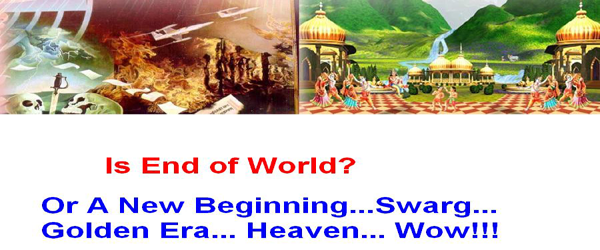
The drama begins with the Golden Age, when every soul expresses its original qualities of purity, peace, love and truth, and human relationships are marked by complete harmony. The virtuous nature of these divine beings is mirrored by nature, which is in its pristine state and serves humans with abundance. This is the time remembered as heaven or paradise by humanity.
Silver Age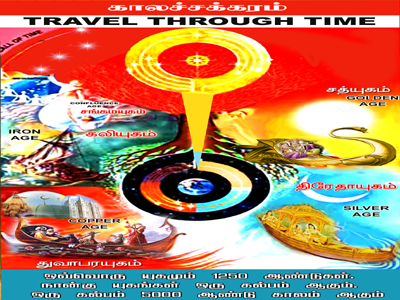
As time goes by, the souls, who are the actors in this drama, undergo a gradual decline. By Act Two, the number of souls has increased significantly, and though all are still happy and prosperous, the radiance and fullness that characterized their lives is no more.
Copper AgeWhen Act Three begins, there is a dramatic change in the souls as well as the elements of nature. The actors lose awareness of their true spiritual self, which creates duality within their minds. The first traces of conflict within and of external strife appear in the play. This fall from the grace of soul–consciousness into the illusion of body–consciousness brings with it the loss of mastery. Human beings search for power and possessions in order to compensate for a growing inner void. Even while searching for lost truth and enlightenment they are deceived into believing that accumulating material possessions will bring them security and peace of mind.
Iron AgeThis state of ignorance and helplessness, and the resulting uneasiness and strife, get worse, and by Act Four, the world is in a state of total despair. Devoid of their spiritual powers, the souls are acting under the influence of vices, and consequently experiencing pain and sorrow. The human family, divided on the lines of race, religion, language, politics and ideology, is torn by conflicts. The planet itself is groaning under the burden of the human population, which has grown exponentially.
Diamond AgeIt is at such a time that the director of the drama appears quietly in one corner of the stage, marking the start of Act Five. He begins to unveil the truths inherent in the story of human life: the truth of the immortality of the soul, its true, eternal relationship with God and the true path to fulfillment and liberation. These words of truth stir, in the actors, memories of their long distant past; there is an awakening. Standing at the dawn they can again observe the carousel of life in its entirety – from divinity to duality, from gold to iron – each soul melding with the eternal rhythm until it comes full circle. With love for God in their hearts and truth once again permeating their being, the actors dance their way gradually off the stage, united in their vision of the approaching golden morning. The darkness of the night slowly lightens into the dawn of the new day. As the curtain comes down on Act Five, it rises again to mark the beginning of Act One. Humanity has come full circle: the old journey of life has ended; a new world begins. Has the script of this drama rung any bells? Have you ever experienced Déjà vu – the feeling that you’ve been here before? What if the story is true – that you really have come to this place in time once again?
View more (Link Of home page)
Awards & RecognitionsVarious establishments and institutions across the world have recognized the selfless service of Brahma Kumaris which has been working for world peace and upliftment of humanity. Some are mentioned here.
- Brahma Kumaris is affiliated to the Department of Public Information( DPI) of the United Nations as a Non-Governmental Organisation (NGO)
- In the Economic and Social Council (ECOSOC) and the UNICEF of the UN, it holds the consultative status.The organization has an office at the UN
- The United Nations “University for Peace’ in Costa Rica receives it’s co-operation in the field of peace education by means of an official agreement
- The Government of Mauritius has recognized it as a University by an Act of Parliament
- The Government of Guyana has adopted the principle of starting the proceedings of their Parliament with three minutes Rajayoga Meditation as suggested by the institution
- The Brahma Kumaris has been awarded UN Peace Medals for 1981 and 1986 and Chief of Brahma Kumaris, Dadi Prakashmani, was awarded International Peace Messenger Award from Secretary General of UN in 1987. Five more National Peace Messenger Awards have also been received by Brahma Kumaris centres in Australia, Kenya etc.
- Dadi Prakashamani was honoured by Mohanlal Sukhadia University, Udaipur, India by conferring Doctorate Degree in Literature for her outstanding contribution to the cause of learning, spreading and development of spiritual. moral and human values.
- The Chief of Brahma Kumaris was invited by the World Parliament of Religions to participate and deliver Presidential Address in its Centenary Celebrations at Chicago on 31st August 1993. She was also signatory to the Global Ethics Document adopted by the leaders of World Religions in the said programme.
- Dadi Prakashamani has been honoured by being presented ‘City Medal’, ‘Key to City’ etc.. by Mayors of New York, Los Angeles, Sao Paulo, Tuskegee, Bulwayo, Nairobi, Frankfurt, etc..
- consciousness and self-realisation
- connection and relationship with God
- the Law of Karma
- the Cycle of Time
- the Tree of Life
- a Spiritual Lifestyle
- make time & space for meditation to establish a daily practice
- harness your thoughts, emotions and responses
- use your meditation skills in everyday life
- To Acceptance
- We must stop trying to change others, as there is enough scope for change in us.
- Appreciation and compliment have got tremendous positive power, however, they should be genuine
- To take little responsibility for their problems
- understand the anger process
- realise the power of your thoughts in dealing with anger
- let go of inner pain
- use spiritual knowledge and awareness to transform anger
- develop a range of practical tools to live a more peaceful life
- The first step is to self introspect or self analysis.
- To put a full stop on wasteful thoughts, due to which anxiety and fear rules the mind
- To learn to be gentle towards the self.
- To stop self pity and demoralisation.
- To tap and boost inner strengths.
- To rectify emotional weaknesses.
- becoming a master of your thoughts and feelings
- applying the gentle art of self reflection and encourage personal growth
- tapping into the natural positivity of the mind
- finishing negative, energy-draining language and self-talk
- developing a constantly positive attitude
- Set Goals that Motivate You. When you set goals for yourself, it is important that they motivate you: this means making sure that they are important to you, and that there is value in achieving them.
- Set SMART Goals
- Set Goals in Writing
- Make an Action Plan.
- Stick With It!
- know and discover your positive self
- accept yourself, identifying personal strengths, abilities and uniqueness
- develop effective strategies for building healthy relationships, letting go of fears and aggression
- empower yourself, making the right choices to maintain inner balance
- Identify different forms of stress and the effects it has on our well-being
- identify the triggers of stress and how and why we react
- use practical tools to enable inner change
- move from fearing change to embracing it
- Develop your spiritual intelligence to manage stress.
- Treat your team members as if they were your family.
- Everyone should be a leader.
- Make sure your team members are smarter than you.
Dadi Prakashamani has been honoured by being presented “Dharma Ratna” award on religion by World Religious Parliament, New Delhi, a ‘Trophy’ for her outstanding contribution for the welfare of humanity and ‘Global Peace’ by Shri C.Subrahmanyam. Governor of Maharashtra at the Felicitation Function arranged by Priyadarshani Academy Bombay. She was invited as a State Guest on several occasions during her tour of Maharashtra, Karnataka ,Orissa, Gujarat and Rajasthan.
Sister Uma Director of Brahma Kumaris, Tiruvannamalai District, has been recognized by an award “Saadanai Magalir Virudhu” in the year 2009 by Govt Arts and Science college of Tiruvanamalai for her service rendered in the field of Spirituality.
View more (Link Of home page)
The Nature of the World Drama CycleThe cycle of five epochs, comprising Golden-Age, Silver Age, Copper-Age and Iron Age and the confluence Age repeats exactly every time after it has turned full wheel. During every cycle, the souls who are the actors on this world-drama stage will be the same. Each soul will act the same part in every cycle since, in the soul itself is indelibly ingrained the part it has played life after life in the previous cycle or that it has to repeat cycle after cycle. Just as in a tape record or a gramophone record, a whole song or drama is recorded and it repeats every time the record is played, even so, a soul’s role in this world drama is recorded in the soul itself which is only self-luminous, conscientious point. The soul replays the part once every 5000 years because each one of the four eras of the world-drama being equal to 1250 years, the duration of one World Cycle is 5000 years.
The Cycle of TimeIn this lesson, we learn about the beginning, the middle and the end of one complete ‘time cycle’ of this world. More than anything else, we will understand the great significance of the period we are undergoing at present.
The world has been in existence since eternity and it will continue to be eternal. The world was neither created anytime before nor will it get destroyed later, because matter can neither be created nor destroyed, it only undergoes transformation from one form to another. Similarly this world also undergoes changes in its characteristics, but as such the world was not created out of nothing nor will there be a total annihilation.
The cycle of time is best understood with the help of the picture of the world drama wheel. It illustrates the “flow” of time. In the middle of it is the Fylfot ( Swastika ) which divides the Time into four equal parts. The Swastika is considered to be very auspicious.
In the first part of this Wheel of Time, marked by Swastika is shown Golden Age. Here the arm of the Swastika is pointing towards right because the right arm symbolizes what is good or what brings about goodness. In these early times, when the cycle started, people of the deity religion ( Sanatan Dharma) were possessed of divine qualities and nature and they enjoyed complete purity, 100% peace and complete prosperity.
Then came the Silver Age. In this era too, people were possessed of purity, peace and prosperity to a very high degree. But the degree of their divine qualities had decreased a little. They were two degrees less divine than the people of the Golden Age who were divine to the extent of 16 degrees. Therefore the arm of Swastika that indicates this epoch is bent downwards because souls in this era had come down from the state of super-righteousness to what is just righteous.
Next came Copper Age. After having experienced beatitude and fruition for many a life, turned ti the path of vices or unrighteousness. This is why the arm is reversed because the left hand symbolizes what is impure and auspicious. People then were second-grade by their nature, qualities and actions. Mankind is now divided on various religions; strife and disputes started to appear and the five vices brought disquiet and sorrow in homes.
Steadily, unrighteous doings, ie the actions done under the sway of one or the other of these five vices, led the world to more and more impurity and sufferings and the world came under the yoke of Iron Age ( Kaliyuga). Strifes, wars, bellicosity and the resulting peace lessness increased rapidly in frequency and intensity in this era. Therefore the fourth of Swastika is shown raising itself up to indicate the rise in conflicts, clashes and calamities. Then, a stage comes when ignorance, lassitude, stupor, moral turpitude and sin become dominant. People become devilish by nature and religion becomes utterly degenerate.
The Significance of the present periodAt present, we are undergoing through a critical phase in the history of mankind. This is the period of the confluence of the ending phase of the Iron Age and the starting phase of the Golden Age. This is the most important of all epochs, called the Confluence Age, whenGod, the Highest Being, descends in this world to meet the human beings, His beloved children and gives the most precious boons of Redemption and Beatitude.
Through the Godly Knowledge and the easy Raj Yoga, God creates the Golden Age or new viceless order. The act of ‘creation’ does not mean constructing something out of nothing but it means the moral reconstruction of mankind or the re-establishment of the ancient most Deity Religion. The reader would be pleased to know or, perhaps, surprised to know that God Shiva, the Supreme Father of all, is indeed doing this great task of resurrection of mankind at present. The world will soon be free of all miseries and the paradise, which is full of peace and happiness, will be established again.
Courses we offer
Raja Yoga Meditation


At the heart of the Brahma Kumaris teachings is the Foundation Course in Raja Yoga meditation. This course provides a practical understanding of the relationship between spirit and matter, as well as an understanding of the interplay between souls, God and the material world. The series of classes in this course will facilitate your inward journey in an efficient and effective way. Learn about:
Explore how to:
Other courses and activities
In addition to Raja Yoga meditation courses, Brahma Kumaris run other seminars, courses, workshops and retreats on personal development. The content and presentation may vary according to country, culture and local facilities. To find out about the courses in your area:Locations
Courses include
Harmony in Relationship

Relationship is one of the most important key areas in our life. Almost everything we do involves a relationship – in our family life, in business dealings, at work, in the social circle, with friends and so forth. It is very essential for us to find out who all are the important people in our life and how to have harmonious relationships with them.
Explore how to:
Overcoming anger


Anger is an expression of inner pain; an indication that all is not well in our world. It is one of the most powerful and destructive emotions. How can we change the anger within and use our energy in more positive ways?
Learn how to:
Enhancing Memory Power
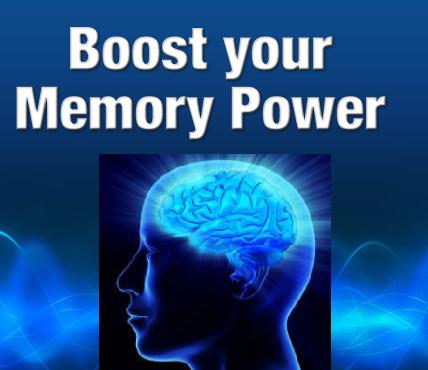
Here the role of meditation becomes even more essential to curb the stress, anxiety and fears (insecurities) of all sorts, to calm our mind and enhance our memory power. It is scientifically observed that both memory power and concentration increases when the mind is calm. When the mind is calm, it works in double speed, more efficiently and produces the desired results which we call achievements. Hence it’s all in the min, not externally.
Learn how to:
Hence meditation steps in to help us to enhance memory power in some ways, such as
Positive thinking
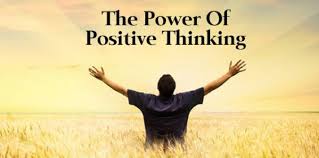
For is for those who are not sure that they are ready for meditation but would like to understand the workings of the mind better, gain greater clarity and learn how to manage their thoughts.
Benefits include:
Goal Setting
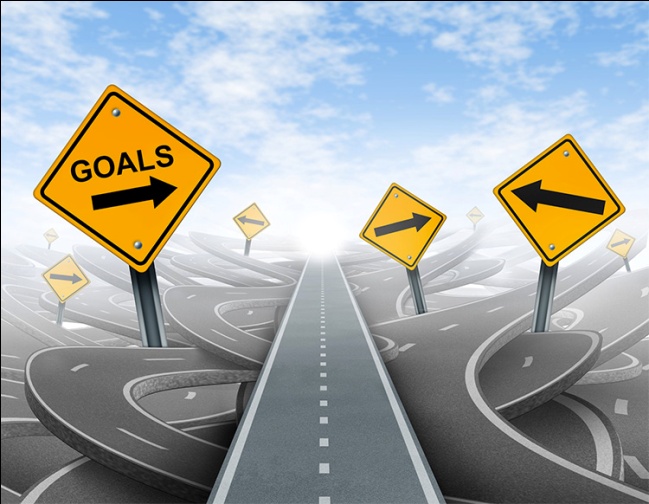
Goal setting is an important method of: Deciding what you want to achieve in your life. Separating what's important from what's irrelevant, or a distraction. Motivating yourself. Building your self-confidence, based on successful achievement of goals.
The Five Golden Rules
Self-esteem

No matter how successful we may be, almost all of us could do with a self-esteem boost. Reminded of our core values, our own innate value, we can face life confidently and peacefully.
Learn how to:
Stress-free living

Stress has been identified as a leading cause of many health problems. Largely psychological, rather than physical in origin and therefore much more difficult to prevent and remedy, modern stress affects nearly all of us at some point in our lives. Regardless of its origins, stress drains our physical, emotional and mental energy.
Learn how to:
Team Building
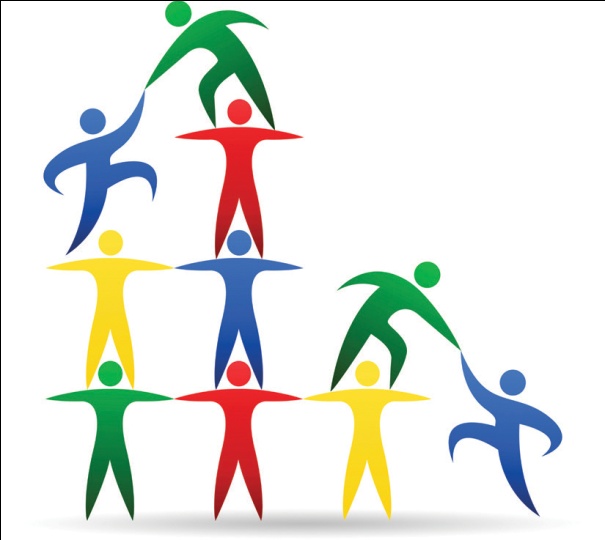
Team building is an ongoing process that helps a work group evolve into a cohesive unit. The team members not only share expectations for accomplishing group tasks, but trust and support one another and respect one another's individual differences.
Learn how to:
KARMA PHILOSOPHY
What comes around goes around…
Life is made of action and reaction – nothing less.
Our thoughts create the world around us. We attract situations, people and experiences based on what we are thinking. Are you aware of what you are thinking? Are you satisfied with the reality they are creating for you? This workshop will delve into the karmic law of thoughts. Karma Philosophy Series
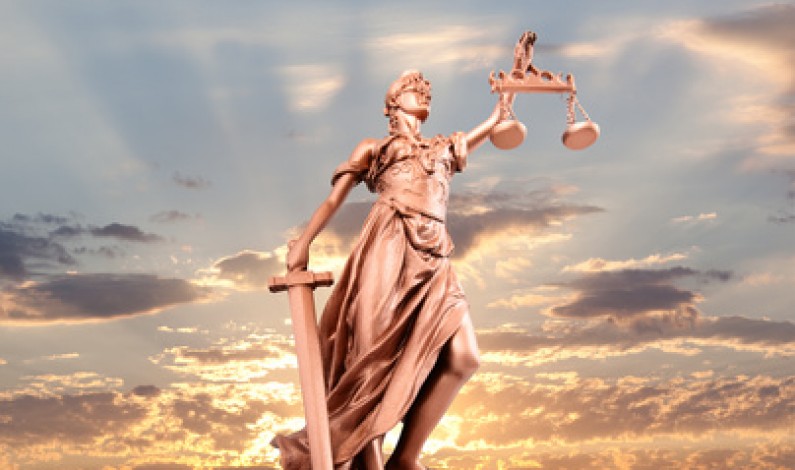
"Karma" translated is "Action." The philosophy of karma examines the many actions we perform, and the results of those actions. This series examines four of the greatest areas of our lives, through a lens of empowerment and hope. Join us as we begin this the powerful series of cause and effect, better known as karma.
Our actions always set in motion an equal and opposite flow.
When we spread good vibes during the day, we feel great at day's close. If you smile at someone, what are the chances that they will smile back at you, even if they don't know you? If you take a moment out of your routine to ring a friend in hospital or help an elderly person load their car with groceries, positive vibes of their gratitude will reach you.
When we feel grumpy, the same principle applies. How we feel about ourselves, our looks, our opportunities will reverberate again and again and again. Until we change the tune!

The boomerang of anger
If we hurt someone, we will have to face the consequence at some point; rarely right now. However tempting it might be to strike someone for their misdeed or punish a mischievous child with force, repercussions will emerge later in life. To lash out in anger or retribution sets in motion an energetic boomerang that will return. Seeing ahead in the moment, foreseeing consequence and acting on it, signals the beginning of wisdom and healthy self-regard.
To fully participate in life is to become fully awake to the reality that each action has an effect. Every movement counts. Each thought rebounds. In contemplation, we witness how each act sets off ‘waves' that will strike some distant ‘shore' and reverberate back into our life.
Move on
Do you carry sad memories, holding them like a security blanket? When life had the good sense to ‘move on', why didn't you?
Stepping forward and leaving the past behind does not mean that you diminish the significance of past challenges and losses - things did happen. But now move on. A change of melody will change how you feel.
Behind the scenes
The world is an echo chamber. Everything we hear is an echo of our own voice bouncing back onto our eardrums. Each movement and event is a rebound from the past. Everything.
Our universe is a hall of mirrors; each moment a reflection of an earlier scene or interaction; each love, a reflection of self-respect. Which means, of course, that each moment is a unique opportunity to avoid doing anything that will bring us future pain and, instead, sow a seed that will bring us the sweetest of fruits.
"Non-violence leads to the highest ethics, which is the goal of all evolution. Until we stop harming all other living beings, we are still savages."Thomas Edison, inventor
Implications for life
Always remember that the Law of Karma acts like an echo. If you speak about anyone's defects or anyone's mistakes, even if you consider yourself to be sensible and responsible, this wasteful speaking will echo back to you. The powerful law of action and reaction says that if today you defame anyone, tomorrow someone else will defame you twice as much.
